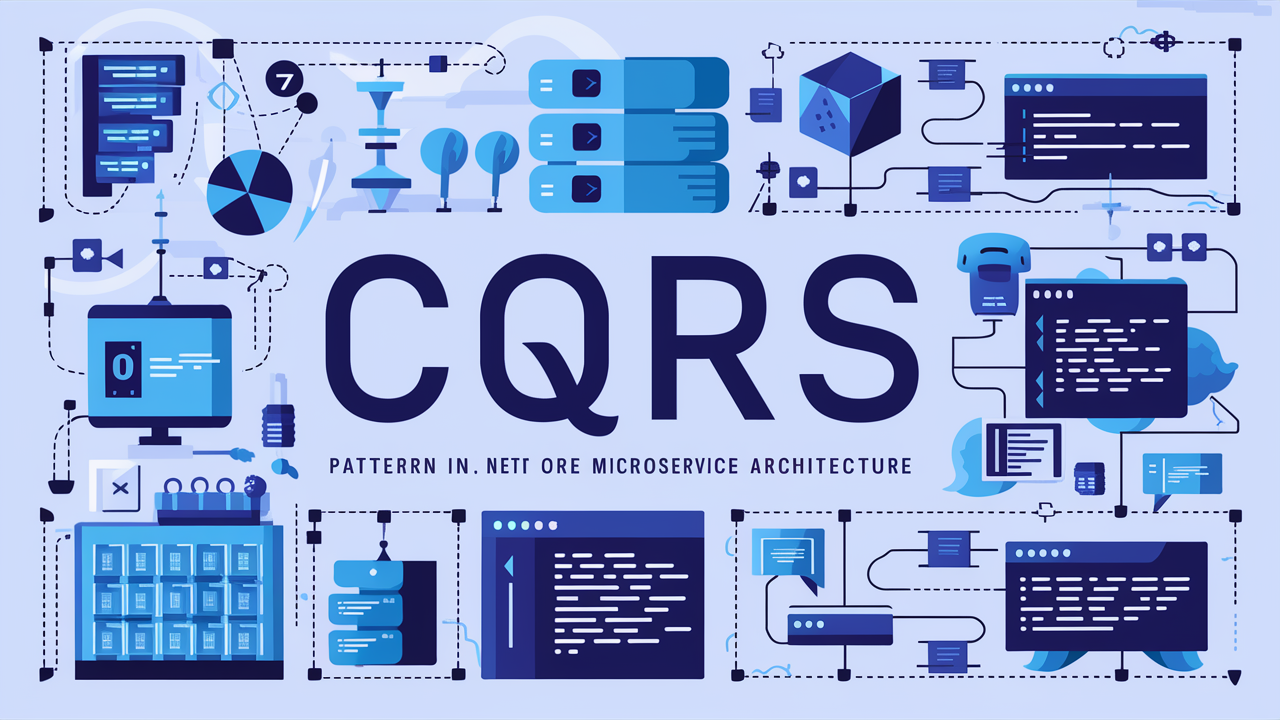
In the world of software engineering, particularly in systems that demand high scalability and performance, efficiently managing command and query responsibilities is crucial. The CQRS (Command Query Responsibility Segregation) pattern emerges as an innovative architectural approach to address these challenges, providing a robust framework to separate read and write operations in a microservice architecture.
In this blog post, we’ll delve into why the CQRS pattern is essential for modern .NET Core microservice architectures, highlighting its benefits in optimizing performance, enhancing scalability, and simplifying complex business logic.
Problem: Challenges in Monolithic and Traditional Architectures
Complexity in Scaling Operations
Traditional monolithic architectures often struggle with scalability. When read and write operations are handled by the same codebase, it can lead to performance bottlenecks. High read loads can degrade the performance of write operations and vice versa.
Difficulty in Maintaining Transactional Consistency
Maintaining consistency and reliability in data transactions becomes increasingly difficult as the application grows. In complex systems, ensuring that all parts of the system are synchronized can be a significant challenge, leading to potential data inconsistency.
Solution: Implementing CQRS in .NET Core Microservices
Separation of Concerns
The CQRS pattern separates the read and write operations, allowing them to be handled by distinct models. This separation helps in optimizing the performance of each operation independently. In a .NET Core microservice architecture, this can be achieved by creating dedicated services for handling commands and queries.
Enhanced Scalability
By separating read and write responsibilities, CQRS allows each to be scaled independently. For instance, read operations, which are often more frequent, can be scaled out horizontally without affecting the write operations. This separation can significantly enhance the scalability of the system.
Simplified Business Logic
CQRS simplifies the business logic by decoupling the command and query operations. This decoupling leads to cleaner, more maintainable code. Each service can focus on its specific responsibility, making it easier to manage and evolve the system.
Implementation Example: CQRS in .NET Core Microservices
To illustrate the implementation of CQRS in .NET Core, let’s consider a simple example of an e-commerce application.
Command Model
The command model handles writes operations. In .NET Core, this can be implemented using a CommandHandler class that processes commands such as creating an order or updating product information.
Query Model
The query model handles reads operations. This can be implemented using a QueryHandler class that processes queries such as fetching order details or listing products.
Outcome: Benefits of CQRS in .NET Core Microservices
Optimized Performance
By separating read and write operations, CQRS ensures that each operation is optimized for its specific task. This leads to improved overall system performance, as each part of the system can be fine-tuned independently.
Increased Scalability
The ability to scale read and write operations independently means that the system can handle increased loads more effectively. This is particularly beneficial for applications with high read-to-write ratios.
Enhanced Data Consistency
Using CQRS with event sourcing ensures that all changes are tracked and can be replayed to reconstruct the system state. This provides a high level of data integrity and reliability, crucial for business-critical applications.
Conclusion
CQRS pattern offers a powerful approach to managing the complexities of modern software systems. By implementing CQRS in a .NET Core microservice architecture, organizations can achieve significant improvements in performance, scalability, and maintainability. If you’re looking to enhance your system’s efficiency and reliability, consider adopting CQRS as part of your architectural strategy.
For more insights and assistance in implementing CQRS in your projects, feel free to reach out to our team of experts who can guide you through the process. Let’s transform your software architecture for the better!

